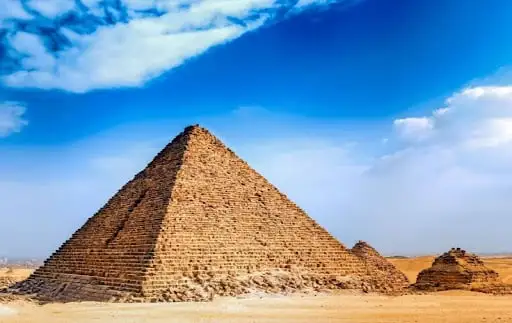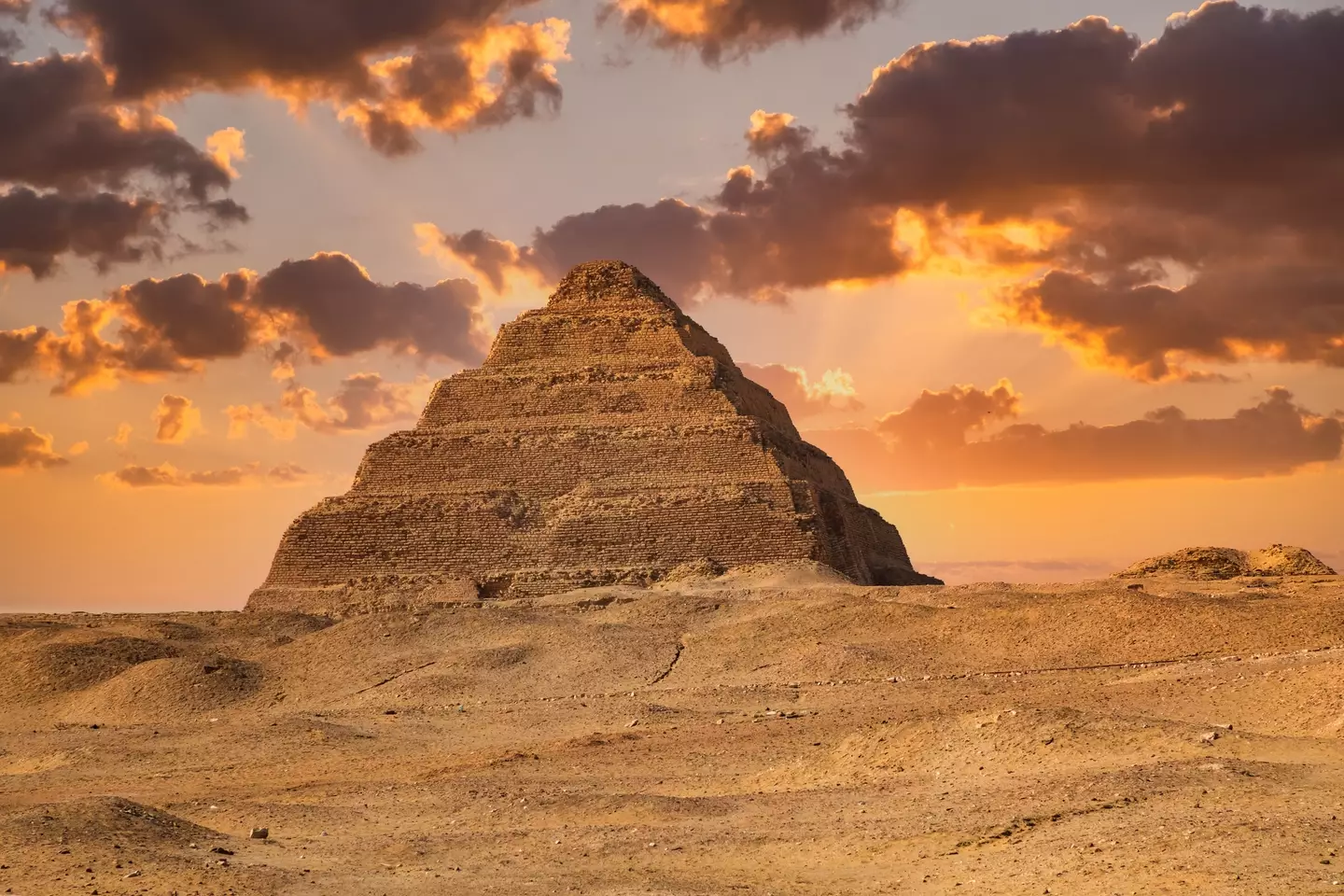The Pyramid of Menkaure, the smallest of the three main pyramids on the Giza Plateau, holds immense historical and architectural significance. Despite its smaller size compared to the pyramids of Khufu and Khafre, the Pyramid of Menkaure symbolizes the enduring legacy of Pharaoh Menkaure and reflects advanced craftsmanship and spiritual meaning. Visitors exploring Egypt with Desert Cruise can uncover the unique charm and mysteries surrounding this remarkable structure.
History of the Pyramid of Menkaure
Constructed during the Fourth Dynasty around 2510 BC, the Pyramid of Menkaure was built as a tomb for Pharaoh Menkaure, the successor to Khafre. Originally standing at approximately 65 meters (213 feet) tall, it was smaller than the other two pyramids but featured a complex that included three smaller pyramids for queens and extensive mortuary temples. Despite its modest size, the pyramid commands respect for its artistry and role in shaping the Giza necropolis.
How Was the Pyramid of Menkaure Built?
The Pyramid of Menkaure was constructed using large blocks of limestone and granite, with a distinctive feature of polished granite casing at its base. The construction involved skilled labor using copper tools and innovative methods for transporting and positioning heavy stones. The precise alignment and intricate internal chambers showcase the Egyptians’ mastery of architectural engineering aimed at preserving the Pharaoh’s body and ensuring his resurrection.
Location of the Pyramid of Menkaure
Located on the southwest corner of the Giza Plateau, the Pyramid of Menkaure complements its neighboring pyramids, completing the iconic trio of Giza. Its placement reflects deliberate alignment for symbolic and religious purposes, maintaining close proximity to temples and the causeways that linked the pyramid complexes for ritual significance.
What Makes the Pyramid of Menkaure Unique?
The Pyramid of Menkaure stands out due to its smaller size juxtaposed with high craftsmanship. The extensive use of granite, especially in the burial chamber, denotes a shift in royal architectural preferences. The pyramid is also accompanied by three smaller queen pyramids, believed to be tombs for Menkaure’s consorts. Its precise construction and the exquisite statues found nearby, including the famous triads representing Menkaure, add to its uniqueness.
Fascinating Facts About the Pyramid of Menkaure
- Originally about 65 meters tall, the Pyramid of Menkaure is significantly smaller compared to the pyramids of Khufu and Khafre.
- The base of Menkaure’s pyramid features polished granite casing stones, a feature unique among the Giza pyramids.
- Three smaller pyramids adjacent to Menkaure’s pyramid are thought to be tombs for queens.
- Several exquisite statues of Menkaure, including triads depicting the Pharaoh with goddesses and attendants, were discovered near the pyramid.
- Archeological evidence suggests construction techniques blending limestone and harder granite materials to improve durability.
- The pyramid complex includes a mortuary temple and valley temple used for rituals honoring the Pharaoh’s resurrection.
Menkaure’s pyramid represents the final monumental pyramid of the Old Kingdom at Giza, marking the end of an era of colossal pyramid construction.
How Desert Cruise Makes Your Visit Special
Desert Cruise offers immersive tours to the Pyramid of Menkaure, providing expert guides who reveal the significance of the pyramid’s art, architecture, and history. Visitors enjoy unique perspectives through quiet, less crowded access, combined with the stunning sunset views of Giza’s plateau. Desert Cruise ensures your visit to the Pyramid of Menkaure is both educational and enchantingly memorable.
Conclusion
The Pyramid of Menkaure, though the smallest among the Giza pyramids, is a majestic testament to ancient Egyptian artistry and royal grandeur. It represents the sophisticated architectural evolution of the Old Kingdom and holds unique spiritual significance. With Desert Cruise, visitors get a rare chance to delve into the mysteries of Menkaure’s reign and experience the serene beauty of his pyramid complex amidst the timeless desert landscape. This pyramid remains a powerful symbol of legacy, craftsmanship, and Egypt’s rich historical tapestry.



